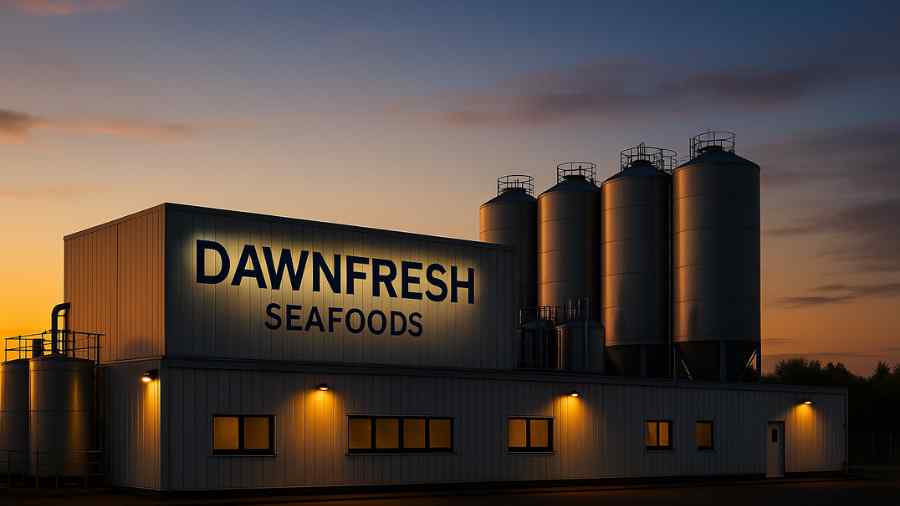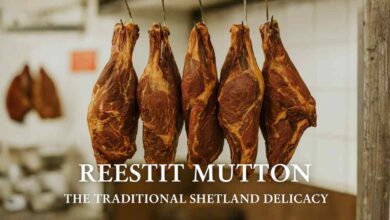Dawnfresh Seafoods: A Deep Dive into the Rise, Fall, and Future of a Scottish Seafood Giant

Dawnfresh Seafoods was once one of the United Kingdom’s most recognisable names in the fish and aquaculture industry. Founded in Scotland, the company built a strong reputation for supplying high-quality trout, salmon, and a range of other seafood products to both domestic and international markets. For decades, it was regarded as a trusted source for fresh and frozen seafood, combining Scottish fishing traditions with modern aquaculture techniques.
However, the story of Dawnfresh Seafoods is not merely one of success and growth; it is also one of financial challenges, environmental scrutiny, and eventual restructuring. In recent years, the company faced significant hurdles that tested its sustainability, leading to a period of administration and the sale of its assets to other firms. Despite its struggles, the legacy of Dawnfresh continues to shape the Scottish seafood landscape, with lessons to be learned from both its triumphs and its failures.
The Origins of Dawnfresh Seafoods
The origins of Dawnfresh Seafoods date back to the mid-20th century in Scotland, where it emerged as a small family-run operation focused on producing and processing trout. Over time, the company expanded its scope to include a wide range of fresh and frozen seafood, building a reputation for quality and reliability.
Scotland’s clean waters, pristine lochs, and strong fishing heritage provided the perfect environment for a company like Dawnfresh to thrive. The firm established processing facilities capable of handling large volumes of seafood, with particular emphasis on trout — a product that became synonymous with the brand itself. As demand grew, Dawnfresh began exporting to multiple international markets, showcasing Scottish seafood on the global stage.
The company’s dedication to quality and traceability earned it long-standing partnerships with major supermarkets and restaurant chains. By the early 2000s, Dawnfresh Seafoods had evolved into one of the largest privately owned seafood producers in the United Kingdom.
The Expansion and Success of the Brand
At its peak, Dawnfresh operated across several locations, employing hundreds of staff. The company owned fish farms in Scotland and Northern Ireland, producing millions of fish annually. Its Uddingston processing facility became one of the most advanced seafood processing plants in the UK, equipped to prepare and package fresh, frozen, and ready-to-cook products.
Dawnfresh Seafoods focused on sustainability and innovation. The company invested in research to improve fish welfare, reduce waste, and enhance farming efficiency. It also developed partnerships with environmental agencies and certification bodies to promote responsible aquaculture practices.
From retail products to food service contracts, the company supplied an impressive range of goods — from smoked trout fillets and marinated seafood dishes to scampi and breaded fish portions. For many years, Dawnfresh was seen as a pillar of the UK seafood supply chain, providing reliable employment and contributing to Scotland’s reputation as a world leader in aquaculture.
Challenges Begin to Surface
Despite its achievements, Dawnfresh Seafoods began to face growing challenges in the late 2010s. The global seafood industry was becoming increasingly competitive, and costs associated with fish farming, energy, and logistics were rising sharply. Environmental concerns also started to attract public attention, particularly regarding the company’s trout farms.
Reports surfaced of fish health issues, high sea lice infestations, and environmental impacts on local ecosystems. Critics accused the company of neglecting proper maintenance and overstocking certain sites, leading to welfare and ecological issues. These allegations, combined with the economic effects of Brexit and the COVID-19 pandemic, placed immense financial pressure on the company.
Furthermore, the seafood sector’s reliance on export markets made it vulnerable to logistical disruptions. When global supply chains slowed, Dawnfresh found itself juggling rising costs and declining margins.
Financial Collapse and Administration
In early 2022, after years of financial struggle, Dawnfresh Seafoods entered administration. The announcement sent shockwaves through the Scottish business community, as it marked the downfall of one of the country’s most prominent seafood processors.
Administration is a legal process in the UK that allows a company to be restructured or its assets sold off to pay creditors. For Dawnfresh, this meant that its production facilities and fish farms were put up for sale.
The company’s Uddingston site — once its flagship processing plant — was eventually purchased by Thistle Seafoods, a major competitor based in Aberdeenshire. Meanwhile, Mowi, one of the world’s largest seafood producers, acquired Dawnfresh’s trout farming operations across Scotland and Northern Ireland.
The administration resulted in the loss of many jobs and the closure of facilities that had been operational for decades. While some of Dawnfresh’s assets were successfully transferred to new owners, the collapse highlighted the fragility of even well-established companies in the volatile seafood sector.
Environmental Controversies
Throughout its later years, Dawnfresh Seafoods was criticised for its environmental practices, particularly regarding fish farming operations. Conservation groups and activists pointed to repeated issues with sea lice infestations and fish escapes that could potentially harm wild salmon and trout populations.
At some sites, particularly Loch Etive and Loch Awe, monitoring data showed severe lice outbreaks that led to widespread fish mortality. Critics argued that these incidents reflected poor management and insufficient oversight.
The company defended its practices, citing the complexity of managing aquaculture environments and the efforts it made to follow regulatory standards. Nonetheless, the controversies damaged Dawnfresh’s public image and raised broader questions about sustainability within the aquaculture industry.
These environmental challenges also carried financial consequences. Rising mortality rates meant lower yields, while negative publicity made it harder to secure investment and maintain retail partnerships. The combination of operational difficulties, environmental concerns, and financial strain ultimately contributed to the company’s downfall.
Asset Sales and Industry Impact
Following administration, Dawnfresh’s assets were divided among various buyers. Thistle Seafoods took control of the Uddingston processing plant, using it to expand its own capacity. Mowi’s acquisition of the trout farming business gave it access to valuable infrastructure, but the company later sold those assets to SeaQure Farming, a venture supported by Gael Force Group.
This redistribution of assets signalled a shift in the Scottish seafood industry. Smaller independent operators gave way to larger, more diversified corporations. The break-up of Dawnfresh also opened opportunities for new businesses to enter the market, taking over former sites and creating fresh employment prospects.
However, for former employees and local communities, the loss of Dawnfresh was deeply felt. The company had been a significant employer and economic contributor for decades, and its closure marked the end of an era for many Scottish towns that depended on the seafood trade.
Lessons from the Dawnfresh Story
The story of Dawnfresh Seafoods offers valuable lessons for the seafood and aquaculture industries. First, it underscores the importance of maintaining strong financial controls and diversifying revenue streams. Overreliance on specific markets or production methods can leave companies exposed when conditions change.
Second, the case highlights the growing influence of sustainability in modern food production. Consumers are becoming more environmentally conscious, and companies must balance profitability with ethical and ecological responsibility. Transparency, rigorous monitoring, and proactive problem-solving are now essential for maintaining trust and compliance.
Finally, the Dawnfresh experience demonstrates how quickly market conditions can shift. The combination of external economic factors, regulatory challenges, and environmental scrutiny can strain even well-established brands. Adaptability, innovation, and resilience are crucial traits for businesses seeking long-term survival in the competitive global seafood market.
The Future of the Dawnfresh Legacy
Although the original company no longer exists in its previous form, the Dawnfresh legacy continues in several ways. The brand’s former assets remain active under new ownership, ensuring that parts of its operations — from processing to trout farming — still contribute to the UK seafood industry.
Companies like Thistle Seafoods and SeaQure Farming have shown commitment to modernising facilities, improving fish welfare standards, and adopting more sustainable methods. These efforts could help restore public confidence and strengthen Scotland’s reputation as a producer of responsibly farmed seafood.
There is also potential for the Dawnfresh brand itself to be revived in some capacity. Given its long-standing reputation and recognition, future investors may see value in relaunching the name with a renewed focus on sustainability and innovation.
Conclusion
The story of Dawnfresh Seafoods is one of ambition, success, struggle, and reinvention. From humble beginnings in Scotland’s lochs to becoming a leading seafood supplier, the company left a lasting mark on the UK aquaculture industry. Its eventual collapse serves as a cautionary tale about the challenges facing modern food producers — from financial instability to environmental responsibility.
Yet, out of this downfall comes renewal. The assets, expertise, and workforce that once powered Dawnfresh are now helping shape the next generation of sustainable seafood businesses. While the company itself may have ended, its influence remains embedded in Scotland’s maritime heritage, reminding future enterprises that resilience and responsibility must go hand in hand in the pursuit of progress.



